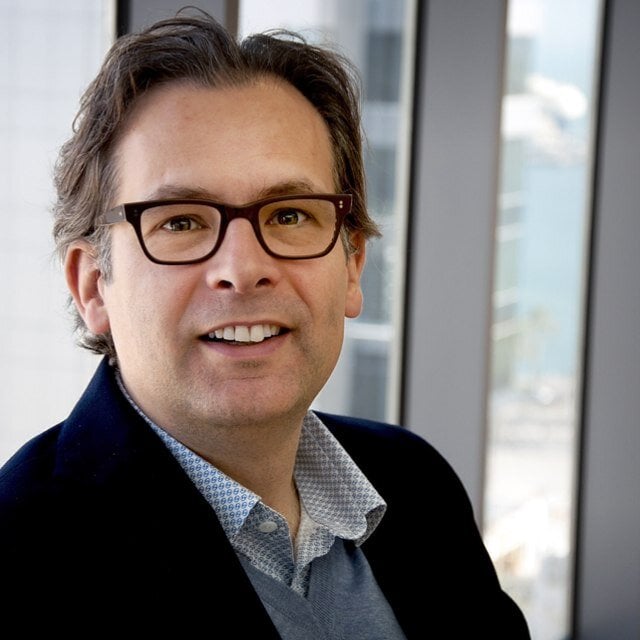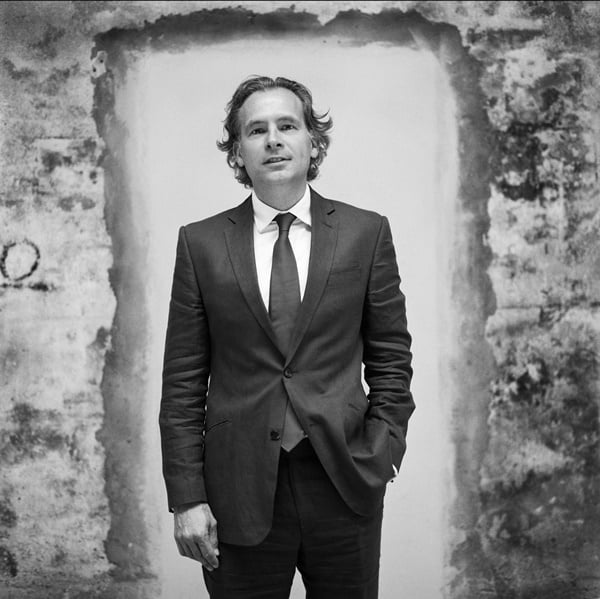Analysis
artnet Asks: Phillips Worldwide Head of Contemporary Art Jean-Paul Engelen
Philllips is in a "very positive" place

Photo via Twitter.
Philllips is in a "very positive" place

Eileen Kinsella


Jean-Paul Engelen, Phillips worldwide head of contemporary art. Photo by Anton Corbijn. Courtesy of Phillips.
It’s no secret that this year has been tumultuous for the auction industry. Volume at major New York and London sales saw a steep drop, while ongoing management turmoil at Sotheby’s and Christie’s has resulted in a game of musical chairs with respect to executives and top specialists.
Meanwhile, Phillips, which for years has been carving out a niche with younger, emerging artists, appears to be plugging along just fine. The auction house’s success includes taking advantage of the unrest at its larger rivals, and adding many well-respected names to its growing roster of specialists, including Cheyenne Westphal and Blake Koh (both veterans of Sotheby’s), as well as Robert Manley and Jonathan Horwich (both formerly at Christie’s).
This trend of poaching top talent started a full year earlier under the helm of Phillips CEO Edward Dolman, who took the reins in 2014 after a three-year stint in Qatar. Prior to that, he spent 11 years as the CEO of Christie’s. One of his first orders of business was hiring contemporary art expert Jean-Paul Engelen, who he had worked alongside with in Qatar at the Qatar Museums Authority; and, prior to that, during Engelen’s 16-year stint at Christie’s.
artnet News had a chance to talk with Engelen about his thoughts on the current state of the art market, Phillips’ recent growth spurt, and its broader strategy moving forward.
What is your sense of the health of the art market at the moment, now that New York spring auctions and Art Basel are behind us and London is directly ahead?
We wanted to have a good sale rate and make certain that when people come in, their time is well spent. It’s no surprise that the market has contracted and this is something that in my 20-plus years in the art world, I have seen before.
We all know if you have fresh, well-priced material, the buyers are absolutely there. (Following Impressionist and Modern sales at Christie’s and Sotheby’s last week, next week sees the series of contemporary sales that kicks off at Phillips on Monday, June 27).

Rudolf Stingel, Untitled (2014) will be offered at Phillips London evening sale on June 27. It is estimated at $1.5–2.2 million. Image: Courtesy of Phillips.
What did you takeaway from the most recent Art Basel fair? What does it tell you about the primary or private market?
The turnout was amazing – it was incredible how many collectors and art world professionals attended. We heard about many deals getting done and met many happy dealers and collectors. Art Basel remains the benchmark for all other art fairs.
Can you talk about Phillips overall strategy and major new hires amid shake-ups and well-documented turmoil at larger auction houses Sotheby’s and Christie’s?
Phillips is invested in the future and we’re growing rapidly. This is still a relationship business, and we’ve made a number of very significant hires in the past few months, including Cheyenne Westphal as our incoming Chairman and Jonathan Crockett as Head of Asia, among many others. We believe we have significant momentum.
A key strategy is taking a strong hold over the middle market. We’ve been able to engage emerging collectors by offering works by artists who are new to the secondary market, often with more approachable prices. We certainly recognize that a certain shift in the market is taking place and, though we consistently offer works by blue-chip artists and hope to increase our focus on 20th century art, we’ve have been able to carefully build sales that appeal to more than a small group of mega-collectors.
What are you seeing in terms of geographic shifts or trends in buying?
The market remains very global—Europe and America are obviously superimportant—but there has been a real pick up of and interaction with Asian clients, a surge in the past few months.
Amid the drop in auction volume, are you seeing differences in activity in the private sales realm vs. activity in the auction sector?
We are building our private sales department. A recent great triumph for us was a private sale, brokered by [deputy chairman] August Uribe, who sold Diego Rivera’s Baile en Tehuantepec to a private Argentinian collector for $15.75 million, the highest price ever paid for a work by a Latin American artist. (According to reports, the buyer was Eduardo Constantini, founder of the Museo de Arte Latinoamerico Buenos Aires [MALBA] and the sale happened right around the same time that a Frida Kahlo painting, Two Nudes, set a new record at Christie’s, albeit on thin bidding).
What are you looking forward to in London or expect to be sale highlights?
A: We’ve got two really great [Rudolf] Stingels that I’m excited about, including a great painting from 2014 that is the back cover of our catalogue (pictured above). We also have a beautiful Adrian Ghenie, a nice [Michelangelo] Pistoletto and a great Domenico Gnoli. I’m happy with where where we landed for June. It’s been a very positive six months. Although the art market really contracted, we’re very optimistic.